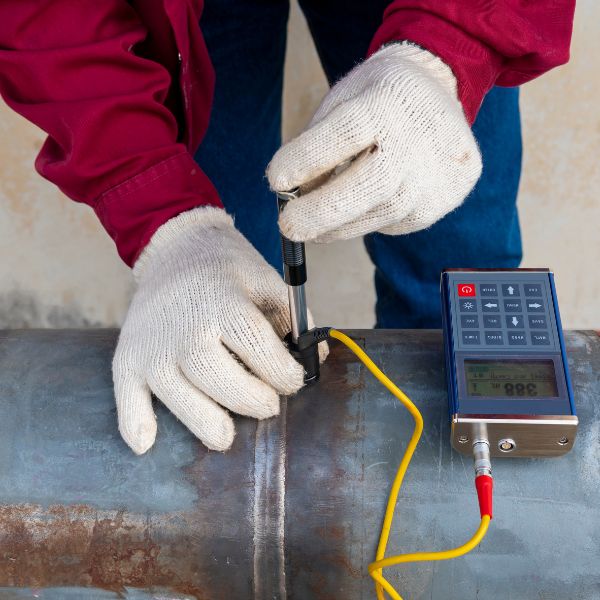Abstract:
Hardness testing plays a crucial role in material testing, especially in assessing components such as die-cast molds and casting molds after heat treatment. This article delves into the history, classification, and various methods of hardness testing. From early scratch tests to modern automated imaging, hardness testing is a key player in material property verification. The article also explores the evolution of hardness testing technology, with a particular focus on the application of closed-loop systems to enhance the accuracy and repeatability of test results. Finally, the article emphasizes the significance of hardness testing in industrial production and research, highlighting the impact of automation technologies in recent years.
1. Introduction
Hardness testing is a crucial step in the validation of material properties, finding particular significance in applications such as assessing die-cast molds and casting molds after undergoing heat treatment. The evolution of hardness testing techniques has witnessed a fascinating journey, from rudimentary scratch tests to the sophistication of modern automated imaging. This article aims to delve into the historical roots, classifications, and various methodologies of hardness testing, elucidating its pivotal role in material science.
1.1 Background
The reliance on data to validate the heat treatment, structural integrity, and quality of components is integral to the manufacturing process. Over the years, by refining traditional testing designs, more efficient methods have been established, significantly enhancing the execution and interpretation of hardness testing processes. This, in turn, contributes to a substantial improvement in the output and consistency of industrial products, such as aluminum die casting parts, zinc die cast components, brass die casting products, iron casting parts, steel casting parts, sand castings, gravity castings, ultimately boosting productivity and efficiency in material production and research enterprises.
1.2 Objectives
Metal hardness testing is the quickest, most cost-effective, and simplest method for evaluating the mechanical properties of metals. The primary objective of hardness testing is to determine the suitability of a material or assess the effectiveness of specific hardening or softening treatments applied to the material for intended purposes.
1.3 Methodology
Around 1900, Martens proposed the following definition of a hardness test: “Hardness is the resistance of one object to indentation by another (harder) object.” This simple yet precise definition has found its place in the technical community and is still used today It’s as valid as it was then. Technical hardness is a mechanical property used to describe a material or the state of a material.
Hardness cannot be measured directly but can be derived from the main measured variables (e.g. test load, indentation depth, indentation area). Depending on the test method, the hardness value can be determined by one of the following methods:
Test load and one of the geometric values characterizing the hardness of the indentation (e.g. indentation depth)
Characterize indentation by length only
through different material responses (e.g. scratch resistance)
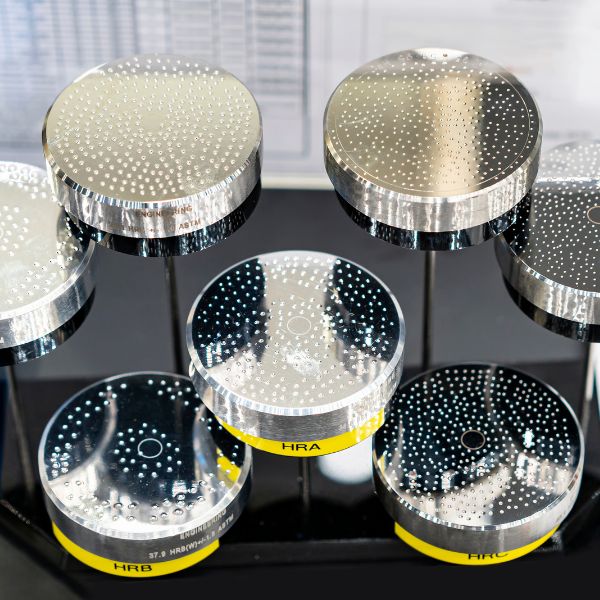
2. History of Hardness Testing
2.1 Early Hardness Testing Methods
The historical trajectory of hardness testing is marked by ingenious innovations that have continually refined the field.
2.2 Development of Mohs and Brinell Hardness
In the early 18th century, French scientist Reaumur introduced a scratch method to test metal hardness. By 1822, Mohs hardness was developed for testing mineral hardness, employing a ten-point scratch hardness scale. Later in the 19th century, Swedish engineer Johan A. Brinell invented a method using a spherical indenter for metal hardness testing, known as the Brinell hardness test, which gained popularity in the industrial realm.
2.3 Emergence of Rockwell and Vickers Hardness
While the Rockwell hardness test idea was proposed in 1908 by Professor Paul Ludwik, it was the Rockwell brothers, Stanley and Hugh, who expanded on the concept, leading to the development of the Rockwell hardness test around 1914. Simultaneously, Vickers hardness was proposed by Robert L. Smith and George E. Sandland in 1921 at Vickers Ltd in the UK. These contributions, along with various other hardness testing methods, slowly emerged and found applications in different testing scenarios.
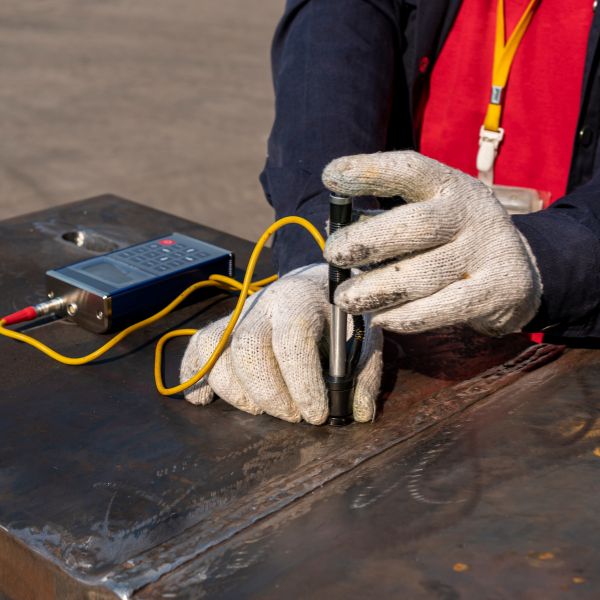
3. Classification and Testing Methods of Hardness
3.1 Brinell Hardness
3.1.1 Testing Principles
The Brinell hardness test employs a hardened steel ball or a hard alloy ball with a specified force to indent the sample surface.
3.1.2 Symbols and Representations
After a defined dwell time, the test force is removed, leaving an indentation with a diameter ‘d.’ Brinell hardness is proportional to the ratio of the test force to the indented surface area. The symbol used is HBW.
Note: As of June 1, 2003, the original Chinese standard GB/T 231-1984 was abolished, and the new national standard GB/T 231.1-2002, following international standards, was established. This standard explicitly abandons the use of steel ball indenters, adopting only hard alloy ball indenters. Consequently, the HBS symbol is no longer in use, with HBW representing Brinell hardness.
3.2 Rockwell Hardness
3.2.1 Testing Principles
The Rockwell hardness test utilizes a diamond cone or hard alloy ball with specified test forces applied in two stages: the initial test force (F0) and the main test force (F1). After loading the initial test force, the initial indentation depth is measured. Subsequently, the main test force is applied, and after removing the main test force, the final indentation depth is measured.
3.2.2 Common Scales
Rockwell hardness is calculated based on the difference (h) between the final and initial indentation depths, a constant (N and S), and is denoted by various scales such as HRA, HRB, and HRC.
3.3 Vickers Hardness
3.3.1 Testing Principles
The Vickers hardness test uses a diamond pyramid-shaped indenter with a relative face angle of 136°. The indenter is pressed into the sample surface with a specified test force, and after a designated dwell time, the test force is removed.
3.3.2 Symbols and Representations
The diagonal length of the indentation on the sample surface is measured, and the Vickers hardness is marked as HV.
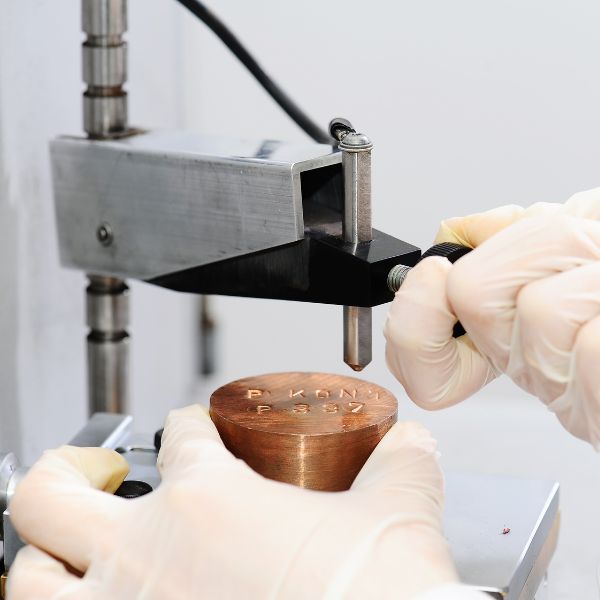
3.4 Other Hardness Testing Methods
3.4.1 Leep Hardness:
Measures the rebound velocity of an impact body on the sample surface.
3.4.2 Shore Hardness:
Uses an indenter to measure the rebound height-to-drop height ratio, applied mainly to elastomers and plastics.
3.4.3 Webster Hardness:
Involves pressing a specified steel needle into the sample surface, with penetration depth indicating material hardness.
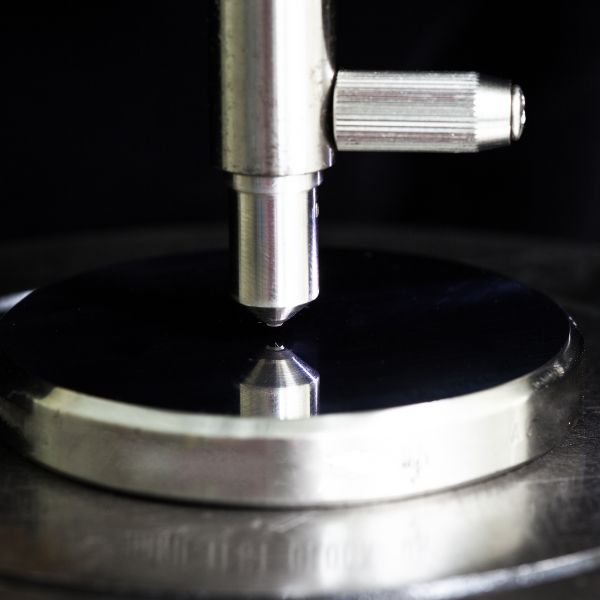
4. Today and Future of Hardness Testing
4.1 Technological Advancements
The technological landscape of hardness testing has undergone significant improvements in recent decades, particularly in parallel with the rapid development of electronics, computers, hardware, and programming capabilities. While early methods heavily relied on self-weight techniques, the introduction of closed-loop systems revolutionized hardness testing.
4.2 Introduction of Closed-Loop Systems
In the 1950s, Instron in Massachusetts pioneered the use of closed-loop systems in tensile testing instruments, which later extended to hardness testing instruments. Closed-loop systems, with electronic force measurements during testing and feedback to adjust force application, significantly enhanced precision.
In the early 1990s, the technology was incorporated into Rockwell hardness testers, subsequently extending to Leeb and Vickers hardness testers, as well as Brinell hardness testers. The adoption of closed-loop systems empowered hardness testing with unprecedented levels of accuracy and repeatability.
4.3 Impact of Automation on Hardness Testing
Automation technologies have further propelled the transition from manual testing processes to automated ones, impacting various aspects such as material preparation, fixture securing, platform movement, and result interpretation and analysis.
5. Conclusion
5.1 Summary of Historical Developments
The historical journey of hardness testing showcases an evolution from simple scratch tests to the sophisticated automated systems of today. From the foundational principles of Mohs and Brinell to the widely adopted Rockwell and Vickers hardness tests, each method has contributed to the comprehensive understanding of material properties. The recent integration of automation technologies has ushered in a new era of efficiency, speed, and accuracy in hardness testing processes.
5.2 Future Perspectives
As we reflect on the past and look toward the future, the role of hardness testing in ensuring material durability, strength, flexibility, and performance remains paramount.
